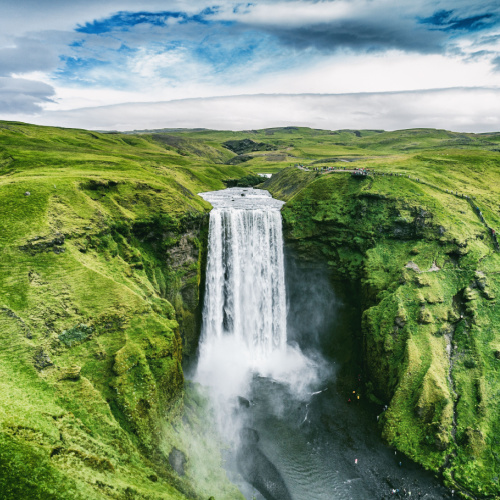
Maridav/Shutterstock
When Is the Best Time to Visit Iceland?
The best time to visit Iceland is during the shoulder seasons of April-May and September-October. During these months, the weather is generally mild and sunny, with fewer crowds and lower prices than during the peak summer season of June-August.
Here are some of the benefits of visiting Iceland during the shoulder seasons:
- Mild weather: Iceland has a subarctic climate, with cool summers and cold winters. The shoulder seasons offer the best of both worlds, with mild temperatures and less rain than the winter.
- Smaller crowds: The shoulder seasons are less crowded than the peak summer season, so you’ll be able to enjoy Iceland’s popular tourist attractions without having to deal with large crowds. This is especially important if you’re visiting popular destinations like the Golden Circle, Jökulsárlón glacier lagoon, and the Blue Lagoon.
- Lower prices: Prices for flights, accommodation, and activities are generally lower during the shoulder seasons than during the peak summer season. This means you can save money on your trip without having to sacrifice quality.
Here are some specific examples of how you can enjoy the most of Iceland during the shoulder seasons:
- April-May: The weather in April and May is typically sunny and mild, with occasional showers. This is a great time to visit for sightseeing the Golden Circle, hiking in the Snæfellsnes Peninsula, and attending the Reykjavík Arts Festival in May.
- September-October: The weather in September and October is also typically sunny and mild, with occasional showers. This is a great time to visit for seeing the northern lights, attending the Reykjavík International Film Festival in September, and celebrating Halloween in Reykjavík.
While there are many great times to visit Iceland, if you’re looking for the best weather, fewer crowds, and lower prices, then we recommend visiting during the shoulder seasons of April-May and September-October.
 Average Temperatures by Month
Average Temperatures by Month
|
Jan |
Feb |
Mar |
Apr |
May |
Jun |
Jul |
Aug |
Sep |
Oct |
Nov |
Dec |
| Fahrenheit |
33°
|
33°
|
35°
|
39°
|
46°
|
51°
|
54°
|
54°
|
50°
|
45°
|
39°
|
36°
|
| Celsius |
1°
|
1°
|
2°
|
4°
|
8°
|
11°
|
12°
|
12°
|
10°
|
7°
|
4°
|
2°
|
Climate in Iceland
Summer Season in Iceland
Icelandic summers are cool and mild, with temperatures typically ranging from 10°C to 15°C (50°F to 59°F). This season is characterized by long days with the phenomenon of the Midnight Sun, providing nearly 24-hour daylight, especially in the northern regions. Summer is the best time for outdoor activities such as hiking, bird watching, and exploring the country's unique landscapes, with its waterfalls, geysers, and volcanic terrain.
Rainy Season in Iceland
Iceland experiences a lot of rainfall throughout the year, but the late summer and early autumn months (August to October) tend to be the wettest. The rain can vary from light drizzles to heavier downpours, often accompanied by strong winds. This precipitation contributes to the lushness of the Icelandic landscapes and is vital for maintaining its unique ecosystems.
Winter Season in Iceland
Winters in Iceland are cold and dark, with temperatures often hovering around freezing, especially in the inland areas. The season is characterized by short days with limited daylight, particularly during the December solstice. Snowfall is common, transforming the landscape into a winter wonderland. Winter is also an excellent time for viewing the Northern Lights (Aurora Borealis), with many clear, cold nights offering optimal conditions for this natural phenomenon. Despite the harsh weather, winter sports and cultural activities like hot spring baths remain popular.
Our Recommendations
| Destination |
Jan |
Feb |
Mar |
Apr |
May |
Jun |
Jul |
Aug |
Sep |
Oct |
Nov |
Dec |
| Iceland |
 |
 |
 |
 |
 |
 |
 |
 |
 |
 |
 |
 |






